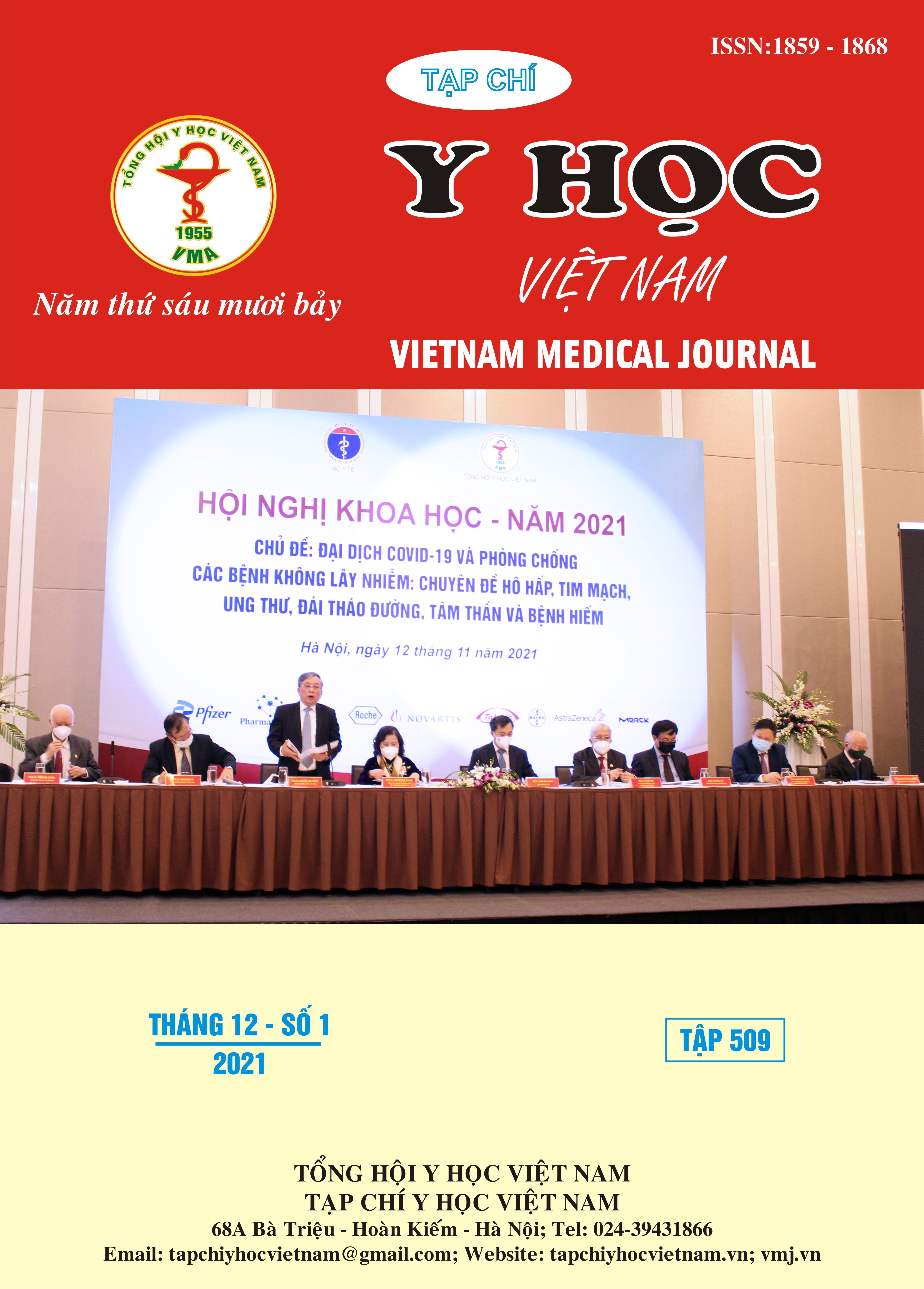STUDY VALUE OF 18FDG PET/CT IN PREDICTING OF EGFR GENE MUTATION STATUS IN PATENTS WITH LUNG ADENOCARCINOMA
Main Article Content
Abstract
Research objective: To study the value of FDG PET/CT in predicting EGFR mutation status in patients with lung adenocarcinoma. Subjects and research method: 114 patients with lung adenocarcinoma stage IIIb and IV had FDG PET/CT scan and EGFR mutation test before treatment from November 2018 to July 2020. Results: Mean age of the patients was 62.3±8.4, male (63.2%) female (36.8%), stage IIIb (43.0%) and stage IV (57.0%) ). 43.0% of the study patients did not express PD L1, 57.0% of the study patients had a positive PD L1 test result, from weak to strong level. EGFR mutation rate and mutation-free rate were 55.3% and 44.7%, respectively. The maxSUV value at primary lung tumor in the EGFR positive group (11.2 ± 5.7) was significantly lower than that of the negative EGFR group (15.8 ± 6.2) (p=0, 04). Using the ROC chart, the area under the curve (AUC) of maxSUV in diagnosing positive EGFR was 0.654 (p<0.05). Combining 4 factors including maxSUV, gender, and smoking status gives better positive EGFR diagnosis results, specifically, the area under the curve (AUC) of the 4 factors is 0.706 (p). <0.05). Conclusion: FDG PET/CT characteristics are relevant and valuable in predicting EGFR mutation status in lung adenocarcinoma patients.
Article Details
Keywords
Lung cancer, adenocarcinoma, FDG PET/CT, EGFR
References
2. Putora PM, Fruh M, Muller J. FDG-PET SUV-max values do not correlate with epidermal growth factor receptor mutation status in lung adenocarcinoma. Respirology. 2013;18(4):734–735. doi:10.1111/resp.12083
3. Lee SM, Bae SK, Jung SJ, Kim CK. FDG uptake in non-small cell lung cancer is not an independent predictor of EGFR or KRAS mutation status: a retrospective analysis of 206 patients. Clin Nucl Med. 2015;40(12):950–958.
4. Na II, Byun BH, Kim KM, et al. 18F-FDG uptake and EGFR mutations in patients with non-small cell lung cancer: a single-institution retrospective analysis. Lung Cancer. 2010;67(1):76–80.
5. Guan J, Xiao NJ, Chen M, et al. 18F-FDG uptake for prediction EGFR mutation status in non-small cell lung cancer. Medicine. 2016;95(30):e4421.
6. Cho A, Hur J, Moon YW, et al. Correlation between EGFR gene mutation, cytologic tumor markers, 18F-FDG uptake in non-small cell lung cancer. BMC Cancer. 2016;16:224.
7. Takamochi K, Mogushi K, Kawaji H, et al. Correlation of EGFR or KRAS mutation status with 18F-FDG uptake on PET-CT scan in lung adenocarcinoma. PLoS One. 2017;12(4):e0175622.
8. Lv Z, Fan J, Xu J, et al. Value of (18)F-FDG PET/CT for predicting EGFR mutations and positive ALK expression in patients with non-small cell lung cancer: a retrospective analysis of 849 Chinese patients. Eur J Nucl Med Mol I. 2018;45(5):735–750. doi:10.1007/s00259-017-3885
9. Ko KH, Hsu HH, Huang TW, et al. Value of (1)(8)F-FDG uptake on PET/CT and CEA level to predict epidermal growth factor receptor mutations in pulmonary adenocarcinoma. Eur J Nucl Med Mol I. 2014;41(10):1889–1897. doi:10.1007/s00259-014-2802
10. Kanmaz ZD, Aras G, Tuncay E, et al. Contribution of (1)(8) Fluorodeoxyglucose positron emission tomography uptake and TTF-1 expression in the evaluation of the EGFR mutation in patients with lung adenocarcinoma. Cancer Biomark. 2016;16(3):489–498. doi:10.3233/CBM-160588


